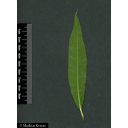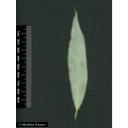Useful information about the taxon (species, subspecies, variety...)
Salix babylonica L. 'Pendula'
Salicaceae
(APG IV)Akzessionnummer: SP-HB-001-10042
Pflanzjahr: 2017
Patenschaftstext: Für Oli
Taxon concept: The Plant List (2014) - Kulturform
Salix matsudana Koidz. 'Pendula' - Accepted: Salix matsudana Koidz. 'Pendula' bei BfN Checklist Flora DE; Familie: Salicaceae (APG IV)Salix matsudana Koidz. 'Pendula' - Synonym: Salix babylonica L. 'Pendula' bei World Flora Online; Familie: Salicaceae (APG IV)
The International Plant Names Index (2009). Published on the Internet http://www.ipni.org; Courtesy to IPNI, 2009. Exported from IPNI at date: 2009-09-22 20:17:51;
Diese Webseite verwendet Google Maps, um Karten und Standorte von Pflanzen in den Hohenheimer Gärten anzuzeigen. Dadurch werden unter Umständen Daten an Google weitergeleitet, was mit einer Verarbeitung Ihrer personenbezogenen Daten verbunden sein kann. Die Datenschutzerklärung von Google finden Sie hier: Datenschutzerklärung von Google


